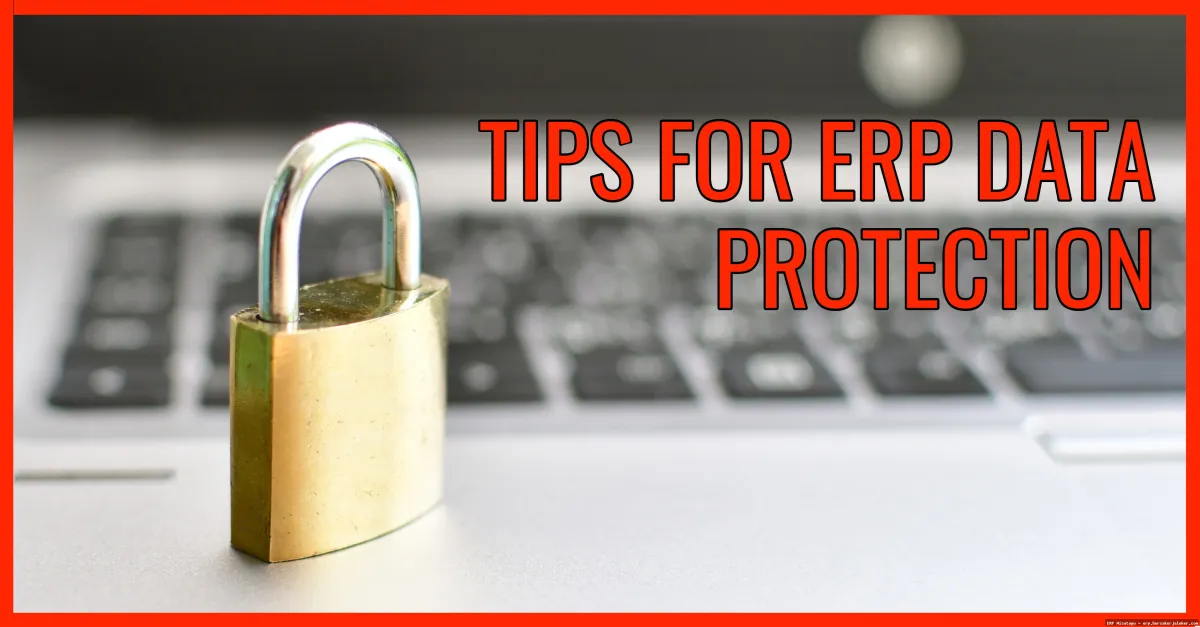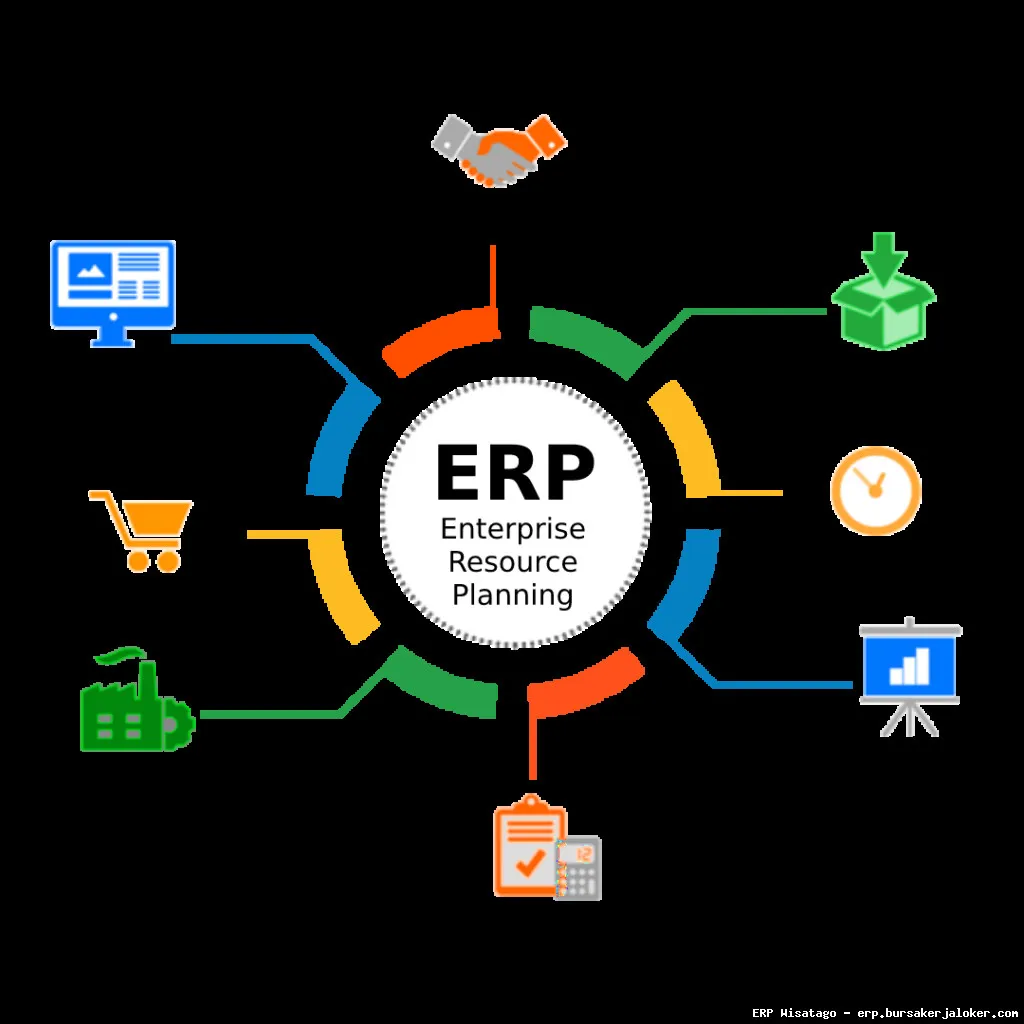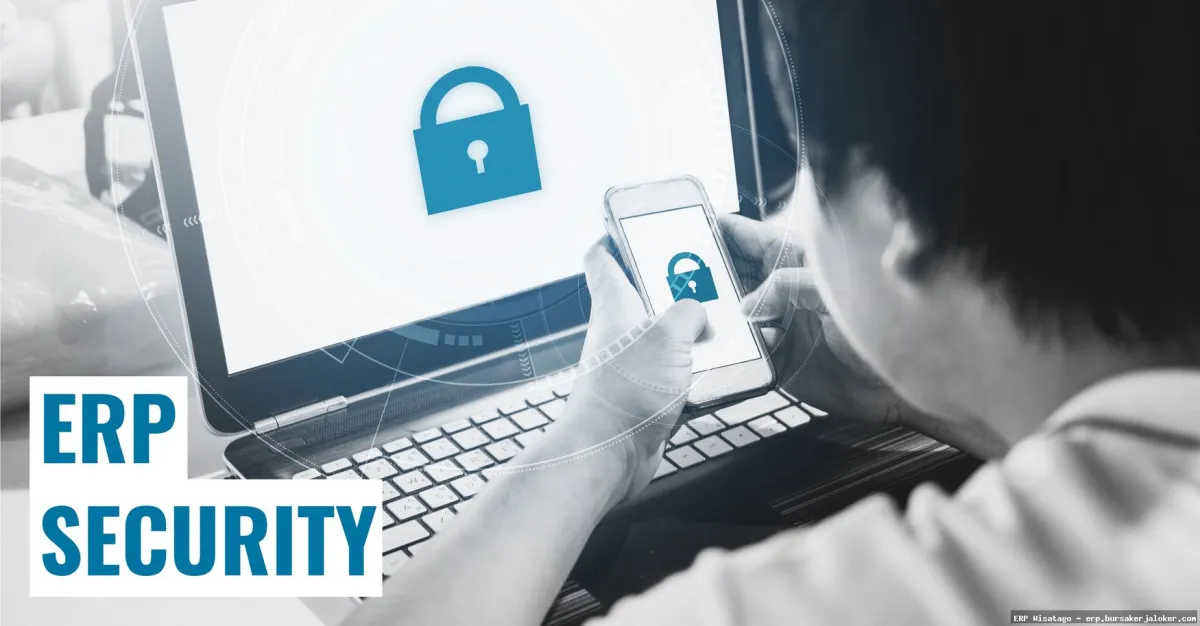Implementing an Enterprise Resource Planning (ERP) system is a transformative step for any organization. It promises streamlined processes, improved data visibility, and enhanced decision-making. However, the complexity and sensitivity of the data managed by ERP systems make them prime targets for cyberattacks. Without a robust security strategy, the very system designed to improve efficiency can become a significant liability.
Having been involved in several ERP implementations and subsequent security audits, I’ve witnessed firsthand the vulnerabilities that can arise if security is not a primary consideration from the outset. It’s not just about installing firewalls and anti-virus software; it’s about a holistic approach that encompasses user access control, data encryption, regular security audits, and employee training. A seemingly minor oversight in one area can create a cascading effect, exposing the entire system to risk.

This guide aims to provide a comprehensive overview of ERP security solutions, covering the key features, potential threats, and best practices for securing your ERP system. Whether you’re in the initial stages of ERP adoption or looking to bolster the security of an existing system, this information will help you understand the landscape and make informed decisions to protect your organization’s valuable data and ensure business continuity.
Understanding ERP Security Threats
ERP systems consolidate vast amounts of sensitive data, including financial records, customer information, supply chain details, and intellectual property. This concentration of valuable information makes ERP systems highly attractive targets for malicious actors. Understanding the specific threats is the first step in building a robust security posture.
Common ERP Security Threats
- Data Breaches: Unauthorized access to sensitive data, leading to financial loss, reputational damage, and legal liabilities.
- Malware Infections: Viruses, ransomware, and other malicious software can disrupt operations, corrupt data, and compromise system integrity.
- Insider Threats: Malicious or negligent actions by employees or contractors with access to the ERP system. This can range from accidental data leaks to deliberate sabotage.
- SQL Injection Attacks: Exploiting vulnerabilities in the database layer to gain unauthorized access and manipulate data.
- Denial-of-Service (DoS) Attacks: Overwhelming the system with traffic, rendering it unavailable to legitimate users.
- Phishing Attacks: Tricking users into revealing their credentials or installing malware through deceptive emails or websites.
- Lack of Patch Management: Failure to apply security updates and patches, leaving the system vulnerable to known exploits.
The Impact of a Security Breach
The consequences of an ERP security breach can be devastating. Beyond the immediate financial losses associated with data theft and system downtime, organizations can suffer long-term reputational damage, loss of customer trust, and legal penalties. In some cases, a security breach can even lead to the collapse of a business. For example, a manufacturing company that loses its production schedules and customer orders due to a ransomware attack could face significant delays, lost revenue, and customer attrition.
Key Features of ERP Security Solutions
Effective ERP security solutions encompass a range of features designed to protect the system from various threats. These features can be broadly categorized into access control, data protection, threat detection, and compliance management.
Access Control
Access control mechanisms are crucial for limiting access to sensitive data and functions within the ERP system. This ensures that only authorized users can perform specific tasks and view specific information.
- Role-Based Access Control (RBAC): Assigning users to specific roles with predefined permissions. For example, a sales representative might have access to customer data but not to financial records.
- Multi-Factor Authentication (MFA): Requiring users to provide multiple forms of authentication, such as a password and a one-time code, to verify their identity.
- Principle of Least Privilege: Granting users only the minimum level of access required to perform their job duties.
- Regular Access Reviews: Periodically reviewing user access rights to ensure they are still appropriate and necessary. This is particularly important when employees change roles or leave the company.
Data Protection
Data protection measures are designed to safeguard data both in transit and at rest, preventing unauthorized access and ensuring data integrity.
- Data Encryption: Encrypting sensitive data both in transit (e.g., using SSL/TLS) and at rest (e.g., encrypting database files).
- Data Masking: Obscuring sensitive data, such as credit card numbers or social security numbers, to protect it from unauthorized viewing.
- Data Loss Prevention (DLP): Implementing policies and technologies to prevent sensitive data from leaving the organization’s control.
- Regular Backups: Creating regular backups of the ERP system and storing them in a secure off-site location. This ensures that data can be recovered in the event of a disaster or security breach.
Threat Detection
Threat detection mechanisms are essential for identifying and responding to potential security threats in real-time. These mechanisms can help prevent attacks before they cause significant damage.
- Intrusion Detection Systems (IDS): Monitoring network traffic and system logs for suspicious activity and alerting administrators to potential threats.
- Security Information and Event Management (SIEM): Collecting and analyzing security data from various sources to identify and respond to security incidents.
- Vulnerability Scanning: Regularly scanning the ERP system for known vulnerabilities and applying patches to address them.
- Anomaly Detection: Identifying unusual patterns of activity that may indicate a security breach. For example, a sudden increase in database access from an unusual location could be a sign of a compromised account.
Compliance Management
Compliance management features help organizations meet regulatory requirements and industry standards related to data security and privacy. This is particularly important for organizations that handle sensitive data such as financial information or healthcare records.
- Audit Logging: Maintaining detailed logs of user activity and system events to facilitate auditing and investigations.
- Reporting: Generating reports on security incidents, compliance status, and other relevant metrics.
- Compliance Frameworks: Supporting compliance with industry standards such as PCI DSS, HIPAA, and GDPR.
- Data Residency: Ensuring that data is stored and processed in accordance with local regulations.
Implementing ERP Security: Best Practices
Implementing effective ERP security requires a comprehensive approach that addresses both technical and organizational aspects. Here are some best practices to follow:
Develop a Security Policy
A well-defined security policy is the foundation of any effective ERP security program. The policy should outline the organization’s security goals, responsibilities, and procedures. It should cover topics such as access control, data protection, incident response, and employee training.
Conduct Regular Security Audits
Regular security audits are essential for identifying vulnerabilities and ensuring that security controls are effective. Audits should be conducted by qualified professionals and should cover all aspects of the ERP system, including the application, database, network, and infrastructure.

Implement a Patch Management Process
A robust patch management process is critical for addressing known vulnerabilities in the ERP system. Patches should be applied promptly and regularly, and the patch management process should be documented and monitored.
Train Employees on Security Awareness
Employees are often the weakest link in the security chain. Regular security awareness training can help employees recognize and avoid phishing attacks, social engineering attempts, and other security threats. Training should cover topics such as password security, data protection, and incident reporting.
Monitor System Activity
Continuous monitoring of system activity is essential for detecting and responding to security incidents. Implement a SIEM system or other monitoring tools to track user activity, system events, and network traffic. Establish clear procedures for responding to security alerts.
Plan for Incident Response
Even with the best security measures in place, security incidents can still occur. Develop a comprehensive incident response plan that outlines the steps to be taken in the event of a security breach. The plan should cover topics such as incident detection, containment, eradication, recovery, and post-incident analysis.
Choosing the Right ERP Security Solution
Selecting the right ERP security solution is a critical decision that can have a significant impact on the organization’s overall security posture. Consider the following factors when evaluating different solutions:
Integration with Existing ERP System
Ensure that the security solution is compatible with your existing ERP system and can be seamlessly integrated without disrupting operations. A solution that integrates well will minimize configuration headaches and data transfer issues.
Scalability
Choose a solution that can scale to meet the organization’s growing needs. As the business expands and the ERP system becomes more complex, the security solution should be able to adapt and provide adequate protection. Effective IT management is crucial for operational efficiency, and RMM offers a centralized platform to oversee and maintain those systems
.
Ease of Use
Select a solution that is easy to use and manage. A complex and difficult-to-use solution is more likely to be misconfigured or neglected, increasing the risk of security breaches.
Vendor Reputation and Support
Choose a reputable vendor with a proven track record of providing reliable security solutions and excellent customer support. Read reviews, check references, and ensure that the vendor offers adequate support and maintenance services.
Cost
Evaluate the total cost of ownership, including the initial purchase price, implementation costs, and ongoing maintenance fees. Consider the long-term value of the solution and the potential cost of a security breach when making your decision.
Conclusion
Securing your ERP system is not a one-time project but an ongoing process that requires continuous vigilance and adaptation. By understanding the threats, implementing appropriate security measures, and following best practices, organizations can protect their valuable data and ensure the continuity of their business operations. Remember that security is a shared responsibility, and everyone in the organization has a role to play in protecting the ERP system from threats.

Investing in robust ERP security solutions is not just about protecting your data; it’s about protecting your business. A secure ERP system enables you to operate with confidence, knowing that your critical data and processes are safe from unauthorized access and disruption. Don’t wait until a security breach occurs to take action. Start implementing these security measures today and safeguard your organization’s future.
The journey to ERP security maturity is a continuous one, requiring constant evaluation and adaptation. By staying informed, proactively addressing vulnerabilities, and fostering a culture of security awareness, businesses can create a resilient defense against evolving cyber threats and unlock the full potential of their ERP systems.
Frequently Asked Questions (FAQ) about ERP security solutions
What are the most common ERP security vulnerabilities that businesses should be aware of?
Businesses need to be vigilant about various ERP security vulnerabilities. Weak passwords and inadequate access controls are primary concerns, allowing unauthorized users to gain entry. SQL injection attacks, where malicious code is inserted into database queries, can expose sensitive data. Outdated software versions often contain known vulnerabilities that hackers can exploit. Lack of multi-factor authentication (MFA) makes it easier for attackers to compromise accounts. Furthermore, insufficient monitoring and logging of system activity can hinder the detection of suspicious behavior. Finally, inadequate data encryption both in transit and at rest can leave data vulnerable to interception and theft. Regular security audits and penetration testing are crucial to identifying and addressing these vulnerabilities.
How can I implement a robust ERP security plan to protect sensitive business data from internal and external threats?
Implementing a robust ERP security plan involves a multi-layered approach. First, establish strong password policies and enforce regular password changes. Implement role-based access control (RBAC) to limit user access to only the data and functions they need. Enable multi-factor authentication (MFA) for all users, especially those with privileged access. Regularly update your ERP software and apply security patches promptly. Conduct periodic security audits and penetration tests to identify vulnerabilities. Monitor system logs for suspicious activity and implement intrusion detection systems. Encrypt sensitive data both at rest and in transit. Train employees on security best practices and phishing awareness. Finally, develop a comprehensive incident response plan to address security breaches effectively and efficiently. A well-defined and consistently enforced security plan is crucial for protecting sensitive business data.
What are the key compliance requirements for ERP systems, and how can security solutions help ensure adherence to these regulations?
ERP systems often handle sensitive data subject to various compliance regulations. Key requirements include GDPR (General Data Protection Regulation) for data privacy in Europe, HIPAA (Health Insurance Portability and Accountability Act) for protected health information in the US, and PCI DSS (Payment Card Industry Data Security Standard) for credit card data security. ERP security solutions can help ensure compliance by implementing access controls to restrict data access, encrypting sensitive data to protect it from unauthorized disclosure, and providing audit trails to track data access and modifications. Data loss prevention (DLP) tools can prevent sensitive data from leaving the system. Regular security assessments and vulnerability scans can identify and remediate compliance gaps. By implementing these security measures, organizations can demonstrate due diligence and adhere to relevant regulations, minimizing the risk of fines and reputational damage.
